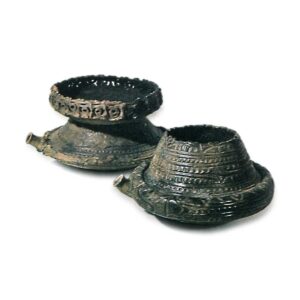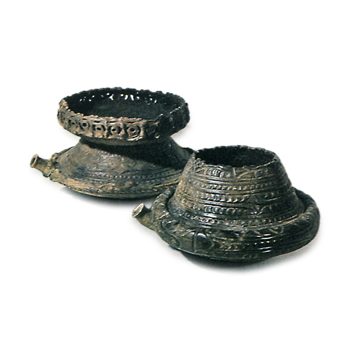
The cylindrical part used for pouring liquid, like the mouth of an earthenware bottle, is called a spout, and earthenware with such a spout is called shiko-doki.
The oldest known example of Jomon-style earthenware in Japan is a deep bowl excavated from the Murotani Cave in Niigata Prefecture (Pioneer Period), which has a very short spout protruding horizontally below the mouth rim. There are also pouring bowls from the early period (Sekiyama style) in the southern Kanto region and from the middle period (Oki style) in the Tohoku region. However, they are all deep-bowl in shape and are rare. It was not until the Late Late Period that the pouring vessel took the form of an earthenware jar and developed systematically, especially in the northern Kanto region. In western Japan, they appeared later, in the middle of the Late Period, and disappeared in the Late Period. Some earthenware vessels with a pouring vessel shape were made to include a handle, while others had ears on two opposite sides so that a handle could be attached to the vessel. Some of the pouring-mouth earthenware from the Tohoku region have the spout as a male vessel, with two variegated butt vessels placed side by side at the base of the spout. Rarely, Yayoi earthenware also has a spouted vessel. The middle period (Tennozan style) in the Tohoku region has a short spout on the body of the jar, the late middle period (Setouchi region) has a spout attached under the rim of a bowl with a base, and the middle period (Su Ku style) in the western part of Yamaguchi Prefecture has a short spout on the body of an open-necked jar with a base. There is also a spout on an earthenware jar from Tottori Prefecture. Sue ware from the Ise Bay area and eastward also has a type of spouted earthenware with a short protrusion around the hole. There is a study (Jijiro Nakatani, “Classification and Geographical Distribution of Anaguchi Earthenware,” Anthropology Department, University of Tokyo, Vol. 4) that classifies the forms of anaguchi earthenware and discusses their regional distribution, but this classification is hardly valid now that research on pottery types has advanced.


